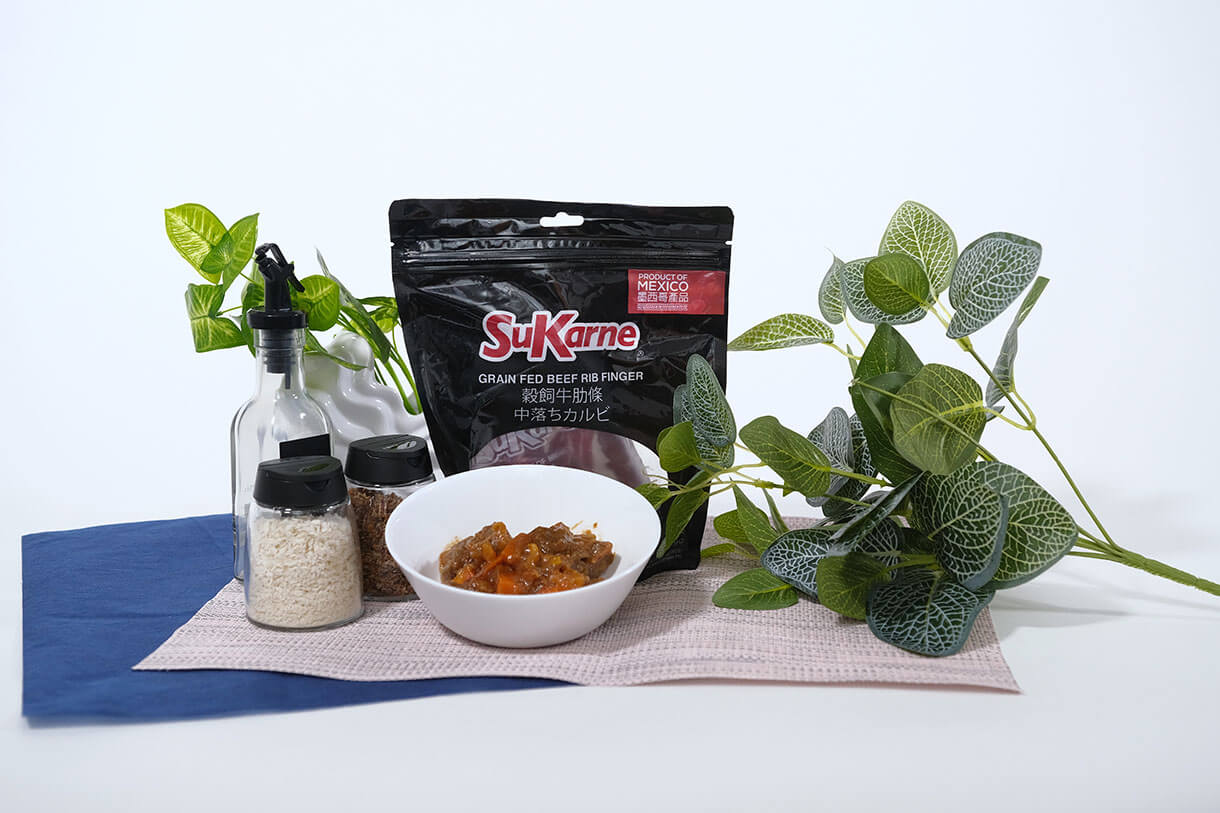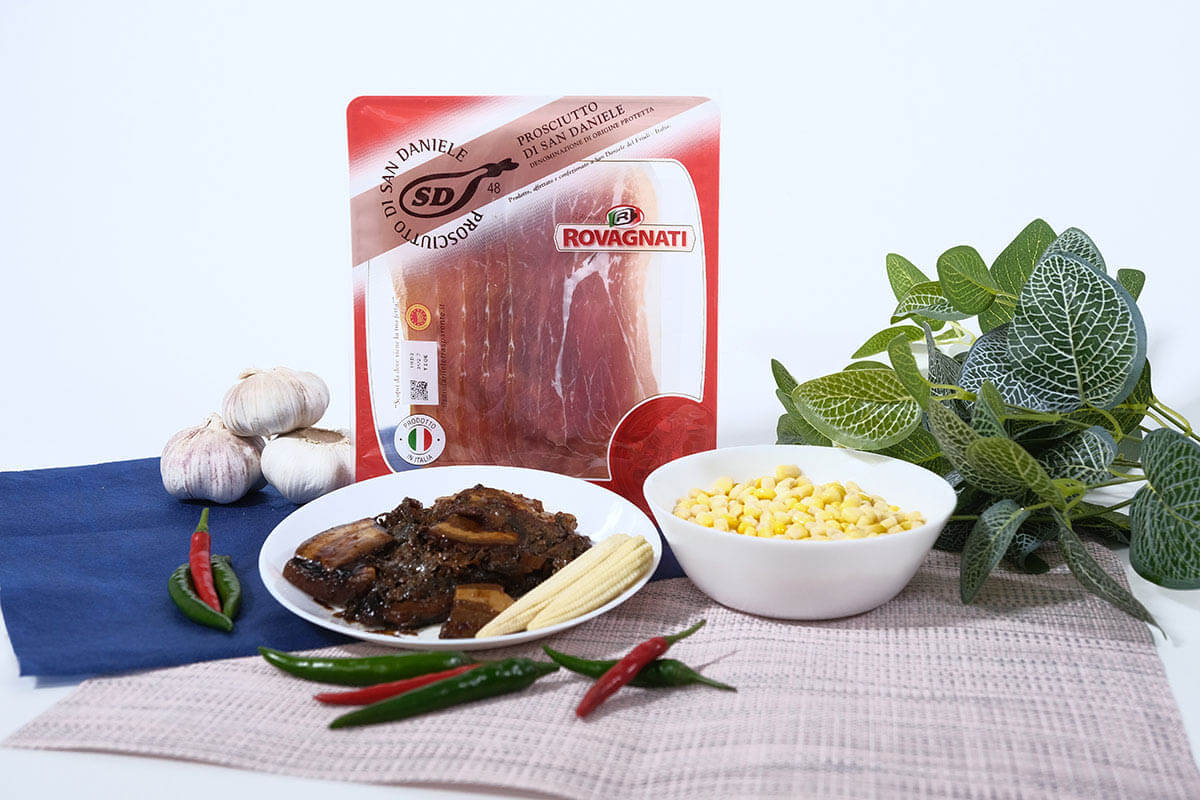
Beef
Consumers identify the freshness of beef by its red colour which depends on the presence of oxygen. Without the presence of oxygen the natural colour of beef is purple. For the purpose of satisfying the perception of the consumers, packaging is committed to maintaining the red colour of beef over the retail sales counter while adopting a different strategy and packaging for the wholesale market of beef.
Beef is packaged in plastic films for both of these two separate and distinct purposes: distribution to retailers and selling at retail. The packaging films used are quite different in each of these two situations.
Prior to being distributed in supermarkets, for example, beef is packaged in bags that are manufactured using a three-layer co-extrusion: EVA/PVDC/EVA. The first one imparts robustness and characteristics of hermetic seal. Similarly, PVDC provides the requisite high moisture and oxygen barriers. The co-extrusion is prepared in the form of a shrink film. After getting filled with the product, it is shrunk in hot water for getting rid of any residual oxygen from the package.
At the supermarket, the beef it is unpacked, cut by the store butcher into consumer-size portions, and repackaged on plastic or paperboard trays and overwrapped with PVC film. PVC has excellent clarity, gloss, and toughness combined while allowing the retention of moisture and access to oxygen allowing the meet to appear red for retail sale. In this situation because customers associate redness with freshness, the shelf life, which would be longer were the beef packaged without oxygen is sacrificed.
Alternative systems of packaging in films exist for both distribution and retail packaging. Systems avoiding the use of PVC, popular in Europe are based on concerns for the environment when burned/combusted.
The low cost of PVC and the excellent match of its properties to the requirements of the product make retail beef and poultry packaging the largest food packaging application for this plastic film. Similarly, the EVA-based barrier bag used for distribution is the largest single application for EVA in food packaging.
An increasing trend for the packaging of beef is where retail cuts of beef are made at the slaughterhouse and packaged and shipped directly to retail stores ready for display and sale. This is a preferable method of packaging and marketing allowing them to brand their products, have better control of the quality and share a larger share of the total profit from sales. This method overall is less expensive. This approach and method of packaging is still being experimented as is the approach to persuade consumers that purple beef is really fresher.
Pork
Plastic packaging for pork is similar to that for beef without the need for concern about the meats redness. To facilitate the case-ready approach preservatives combined with vacuum or modified atmosphere packaging (MAP) is used with EPS or PET trays and a variation of PE or PP/PE shrink film. These small packages are combined in a gas-purged master pack consisting of a PET tray lidded with a PET/PE/ionomer film. This method of packaging pork offers a 14 day of shelf life for distribution and about 3 days in the supermarket.
For more information about our products:






